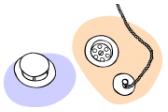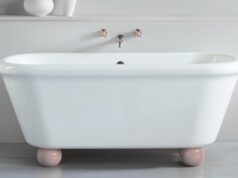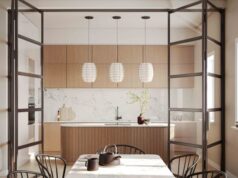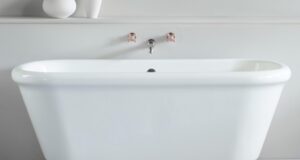
Also called drains and plugholes, wastes are the grills through which water is drained as it leaves your bathroom. Find out what variations exist for wastes.
Wastes, also commonly known as plug holes or drains, are an important part of any shower stall, bath or basin. Wastes are often installed on bathroom and laundry floors too, to help drain off excess water.

What are drains and traps used for?
Wastes connect to drainage pipes, and help to prevent large objects or things that are likely to cause blockages – like long hair in the shower, or foodstuffs in the kitchen basin. The drains you use in your bathroom and kitchen all have different requirements, even if they all look basically the same at first glance. All drains incorporate some kind of trap which prevents foul-smelling gases from coming back up from the sewer piping and floating around in your living space.
Proper drainage is vital in bathrooms, kitchens and laundries. Poor drainage can be a hassle to maintain in the best of circumstances, and can spell disaster in the worst. Flooding in the bathroom or laundry can easily spill over to other areas of the house, damaging foundations, flooring, woodwork, cause mould to form and worst of all jeopardising lives if the water comes into contact with electricity.
Types of wastes and drains
There are two basic waste types: pop up wastes and grid wastes. Pop up drains are opened and closed either by means of a lever which can be located in a convenient spot, usually behind or near the spout. Some pop up drains can be operated simply by pressing on them. These drain types are most commonly used in baths and vanity basins, where they are able to help retain water without the need for a plug. Pop up wastes are less suitable for things like showers and laundry floors, where constant drainage is required and where people are likely to need to stand.
Basic grid drains are suitable for use just about anywhere that a drain is required. In shower stalls and on floors they’re usually flush with the floor surface, but in the case of vanities, kitchen sinks and bathtubs, they need to be recessed to allow a plug to be inserted so that water can be retained.
Drains are made using all types of materials including stainless steel, chrome, brass and plastic, and can be matched quite easily with your taps and other fittings. Whether you use a pop up or grid drain will largely come down to whether it is convenient to install one or the other, but aesthetics play a part too.

Types of traps
There are a number of different styles of trap available to suit the different needs of different plumbing fixtures around your home. Your bath will need an in ground trap for example, while your vanity basin drain is likely to lead through a wall. The different types of trap all use water to prevent air from the sewer coming back up the pipe. The kind of air that’s likely to come up from the sewer is likely to smell awful, and would also pose a health risk. If your bathroom, kitchen or laundry is going to be left unused for a very long time, you should flush some water down the drains and then leave the plugs in, which will help to prevent evaporation. Trap styles are sometimes named after letters that the piping resembles, such as S and P traps. Other traps include the bottle and shallow curve traps. All have different applications.
How different traps work
P traps (see diagram) are the most common style of trap. With P traps, the waste pipe makes a loop which retains water inside, creating the water seal. S traps are similar but do not loop back on themselves (instead forming an ‘S’) and so require more space. P traps are mainly used underneath sinks and basins and connect to a wall, while S traps (also known as S bends) are more common in toilets.
Bottle traps are newer to the market and do away with the curving pipe altogether, using a plastic cylinder to create the water seal. These are ideal under smaller vanity units where space is at a premium. Shallow curve traps have the same 180-degree curve to create the water seal, but over a much longer distance so these are commonly found under baths, showers and other areas which have a lot of horizontal space, but not much vertical clearance.
Overflow drains
An overflow drain is a mechanism that drains away excess water and prevents a bath or basin from overfilling. Overflow drains in baths are a great idea, but they’re not commonly found in older homes. Overflowing baths and basins are the main cause of flooding in bathrooms and kitchens, and these types of drains are a very good way to prevent this. The drain is connected to the main drain, but is located near the very top of the tub or basin so the water cannot be filled beyond that point.





